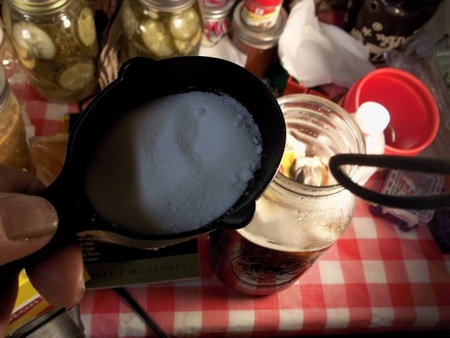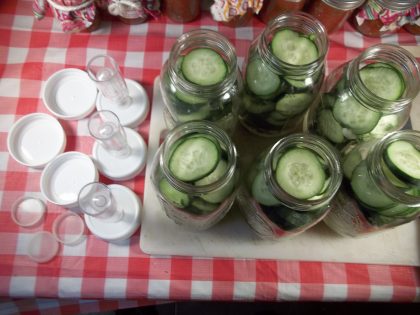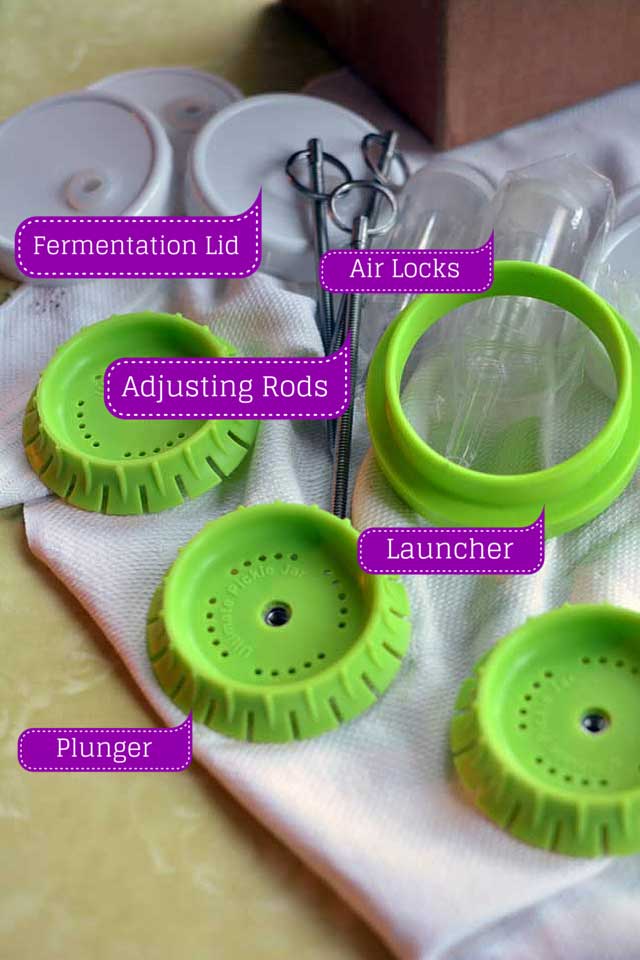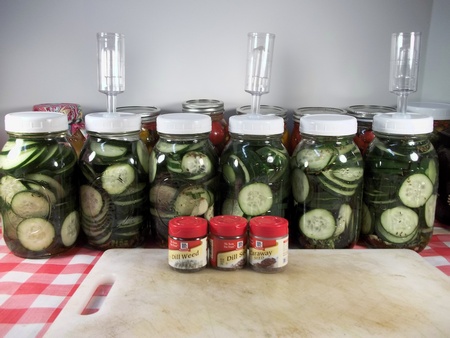This is the most important single factor in lacto fermenting!
There is really no “Basic Brine” recipe. There are recommendations of brine for each type of vegetable basically based on it’s hardness and acidity. Tomatoes would require less than cucumbers due to acidity. Peppers mash would require more due to its acidity and texture as well.
NOTE: READ YOUR RECIPE’S DIRECTIONS! KEEP NOTES ON YOUR FERMENT’S RESULTS. 🙂
BRINE SOLUTION:
This is the recipe for a brine that is poured over a vegetable. In my opinion, this results in a much less precise percentage for the brine than the dry brine method. What I mean is that you can pack a jar very dense with one type vegetable cut up one way and less dense when cut up another way. The result is that the amount of brine used for each jar will vary as will salt content of each jar.
NOTE: Follow the direction for the recipe that you are using and keep notes. If you have no problems and the results are not salty, then you have a winner. If you have early problems with molds , then it is possible you will have to increase the salt at that point or the next time you attempt that recipe. Good record keeping is the key. Make sure to bookmark the recipes you tried and the results. Eventually you will need no recipe and achieve great results as fermenting is not rocket science nor is it time consuming .
Here is a chart showing how to make a simple liquid brine based on percentage:
Water is U.S. Volume Measurement and salt is in grams:
% brine 1-cup 2-cups 4-cups 8-cups 16-cups 1-pint 1-quart 2-quart 1-gallon 2% 5gm 10gm 19gm 38gm 76gm 2.5% 6gm 12gm 24gm 48gm 95gm 4% 10gm 20gm 39gm 76gm 152gm 5% 12gm 24gm 48gm 96gm 190gm 10% 24gm 48gm 95gm 190gm 380gm
DRY BRINE:
This is how much salt is added to a ferment mixture and not to the water.
For a pepper mash it is recommended to use 1 ounce salt per pound of whole peppers prior to grinding. This will give a 6% salt concentration and if mold is present in a week then add up to 1/2 ounce more which will stop most further problems. This sort of recipe does not add additional liquid to the ferment. Salt is added directly into the mash or ground vegetables. It is important here to correctly weigh the salt.
NOTE: 1 ounce is 28.3 grams
Why not in tablespoons?
Answer is simple. All salts are not equal. NEVER USE IODIZED SALT! It will cause your ferments to change color!
Other than that, the reason is that some salts are course ground and others are fine ground and the result is the same volume but very different strengths. And make sure your salt is also dry.




